Showing 101–110 of 152 results
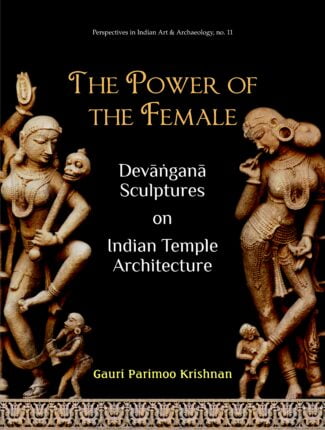
Sculptures of numerous engaging devanganas the surasundari, apsaras and alasakanya figures decorate walls, ceilings and doorways of classical structures in India. The book offers dynamic meanings of these figures in religious and cultural consciousness of India and how they symbolize and illustrate the power of the female in Indian traditions.
This book is an offering to New Art History taking the study of Indian classical sculptural art and traditional Indian iconography to newer heights of interpretation. Sculptures of female figures in classical Indian architectural traditions have enjoyed a special placement and significance. Numerous engaging images of devanganas the surasundari, apsaras and alasakanya figures decorate walls, ceilings and doorways of Hindu temples in India. Viewing the devangana sculptures as a continuation of the yaksi sculptures of Buddhist and Jaina monuments and the concept of primordial mother goddesses of the Vedic times, this challenging work on the devangana sculptures studies the morphology, iconology and semiotic meanings of the devangana figures and their placement in monuments of Gujarat, Rajasthan and Madhya Pradesh between the eighth and twelfth centuries ce.
In a path-breaking effort, the work focuses not on the much-discussed erotic and sexual connotations but explores their dynamic meanings in the religious and cultural consciousness which help to symbolise ßthe power of the femaleû in representational artistic traditions of India. For this, copious architectural and religious texts are examined. With more than 250 illustrations of temple sites and detailed sculptures, this book enquires into the imagery of these figures. A significant aspect of the research is its critiquing of the existing literature on the subject to come up with novel viewpoints and use of tools like dhvani theory, psychoanalysis and feminism to interpret the devangana sculptures.
The book will benefit young researchers, cultural enthusiasts and erudite scholars of Indian art and architecture focused on religious and cultural significance of Indias sculptural heritage.
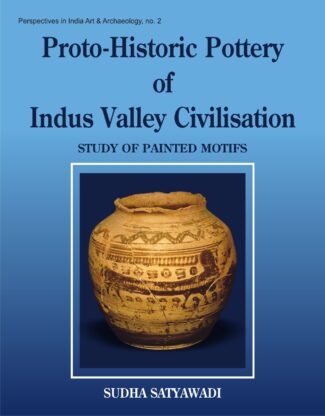
Dr. Satyawadis book is the first-ever study of painted pottery motifs of the Indian subcontinent (earliest times to 1750 BC). It explores the genesis and development of popular forms and classifies art motifs into their different genres.
In the 1920s was found one of the worlds oldest, most mysterious civilizations: the Indus Valley. Which, in view of the relatively more recent archaeological evidence, could possibly have evolved from a much older, indigenous culture: of about nine millennia ago some 6000 years before the growth of Mesopotamian urbanism or about 2000 years before the Egyptians. Among a variety of excavated material remains, pottery affords a significant clue that influences archaeologists conclusions. Despite many a scholars avowed fascination for the pottery of the Indian subcontinent since John Marshalls days, Dr. Satyawadis book becomes the first-ever, exclusive study of its art motifs: from the earliest times to 1750 bc Marshalling a whole diversity of painted-pottery motifs: from potsherds, from excavatory reports, and from as many as twenty archaeological museums of India, it explores the genesis of popular themes/forms and how they developed from their most primitive character to mature Harappan period with sharp focus on their creative purpose, stylistic/formal variants and their spatial-temporal parameters. Also surveying extensively the painted pottery of Indus Valley: of both pre- and post-Harappan cultures, the author painstakingly classifies art motifs into their different genres: religious, ritualistic, decorative, superstitious, and personal. And into their different forms too, like geometrical, floral, faunal, other. In her effort to probe the beginnings of pre-Harappan pottery motifs, the artist in Dr. Satyawadi visualizes their continuity not only in mature Harappan cultures, but even in contemporary folk and tribal art of India: almost in their pristine, primitive form keeping alive, from generation to generation, an insistent, inherently powerful tradition, despite the ravages of time. The author also tries to trace the linkages between the painted motifs (on pottery) of Indus Valley and other old-world cultures, notably, Mesopotamian, Egyptian, Afghan, Iranian, and Baluchi. With one hundred thirty six photographic reproductions, this study is supplemented by over 650 line-drawings which, (all beautifully copied by the author herself straight from museum exhibits), try to capture the panorama of protohistoric art motifs in their essential variety and pristine splendour.
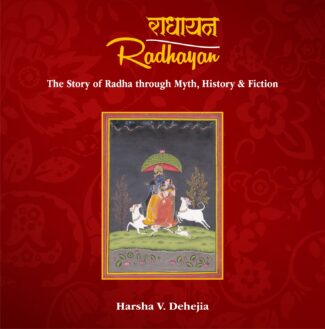
This volume weaves an enchanting story of Radha with a multicoloured thread, where myth blends into history and fiction challenges reality and Radha emerges in all her poetic glory in this spellbinding story. Here in miniature paintings, through line and colour, Radha comes alive as a multidimensional, many-nuanced paragon of love. This is Radhayan.
Of all the mythic characters in the Hindu pantheon none is more enigmatic and evocative than Radha. Appearing for the first time in Jayadevas Gita Govinda, where she is the ultimate beloved, she traverses political dynasties, royal ateliers and social barriers to emerge as a consort of Krishna. Brought alive by poets, developing a colourful presence in the hands of painters, dancing through prosceniums and acquiring a lyrical life through songs, both classical and popular, Radha is present in homes and havelis, celebrated by the the samajika and the rasika, has a presence in temples and roadside shrines as a symbol of pure and eternal love. And yet there are so many questions about her life; poets differ in their portrayals of her, historians argue, dancers claim her through their interpretations and for the common person she is now a shringara rasa nayika and now a goddess. But Radha stands steadfastly alone refusing to be bound down by poets or potters, dancers or singers. Harsha V. Dehejia weaves an enchanting story of Radha with a multicoloured thread, where myth blends into history and fiction challenges reality and Radha emerges in all her poetic glory in this spellbinding story.
Vijay Sharma and his team of artists bring Radha colourfully alive with miniature paintings, for it is there rather than sculpture that Radha resides. She is essentially kavyamaya, her origins are in the minds of poets, it is there that she grows, dallies and evolves. And while her voice is heard in songs and her footsteps resonate with dancers, it is in miniature paintings, through line and colour, that Radha comes alive as a multidimensional, many-nuanced paragon of love.
This is Radhayan.
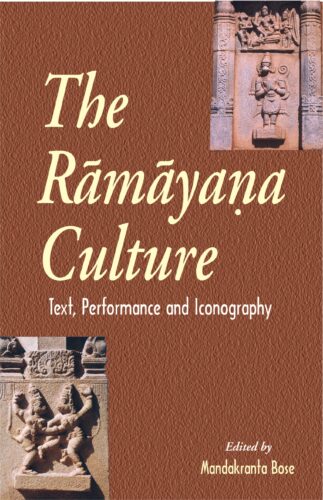
The essays in this volume approach the Ramayana from different perspectives textual criticism, art and architecture, and film to understand its ideological and aesthetic meanings. They address critical issues like the seminal status of Valmiki, gender representation in Ramayana and the importance of the so-called Ramayana derivatives.
These essays, originally presented at an international conference, are in the forefront of the modern response to an ancient work that has gained a new critical and social relevance in contemporary scholarship. Approaching the Ramayana from several angles in an attempt to understand its aesthetic and ideological meaning, they examine the epic through the perspectives of textual criticism, art, architecture and film. Thereby they address critical issues such as the seminal status of Valmiki, the underlying problem of canonicity itself, the importance of other — so-called derivative — Ramayanas, the implications of gender representation, and the cultural manipulation of social ideals relating to the position of women and the idealisation of love that achieves its highest value in marriage. Using the methods of rigorous textual and historical investigation, each essay seeks not only to uncover the layers of meaning in the complex structure of the epic in its varied forms but also to situate it critically in the cultures of South and Southeast Asia.
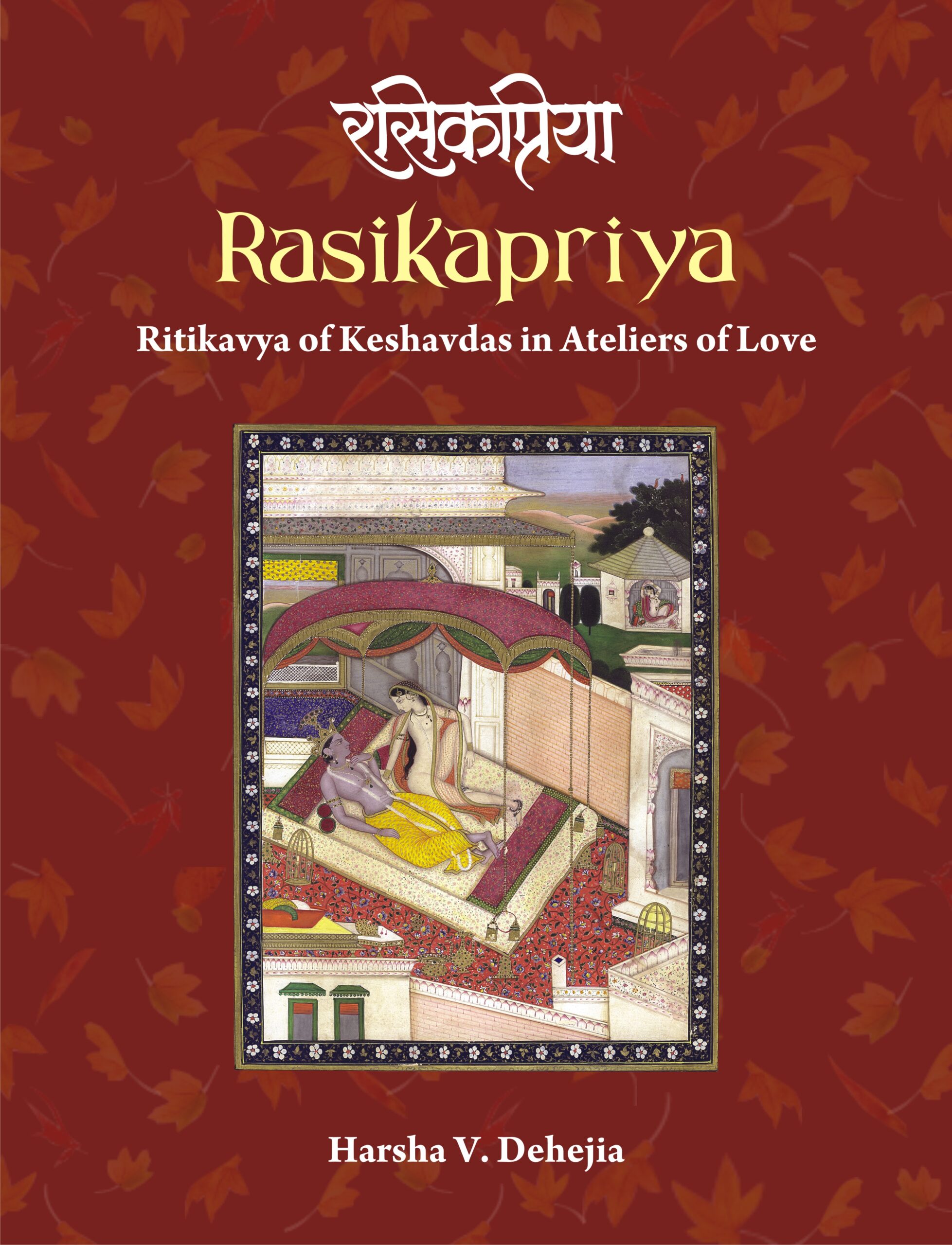
This book brings, for the first time, the translation of the entire text of Rasikapriya of Keshavdas in English with more than 400 paintings. In its pages are whispers of Krishna and Radha, and the hushed voices of the sakhis as they celebrate romantic moments of longing and belonging in the regal splendour of pranaya mandaps of havelis or verdant and idyllic groves.
Rasikapriya is a lakshan granth, a foundational text, of ritikavya or mannered poetry, and Keshavdas is the father of ritikal. It was the early seventeenth century, and in the court of Raja Indrajit of Orchha in Bundelkhand, Keshavdas, the court-poet, would recite short romantic verses and the gathered connoisseurs of poets, musicians and dancers would respond, and the atelier would resonate with the many textures and hues of shringara. This was the beginning of Rasikapriya, a text that is still central in the celebration of love. Keshavdas was a poets poet and he created a monumental text that remains the gold standard of ritikavya even today. And if that was not enough Rasikapriya inspired artists to create paintings illustrating its many dohas and savaiyas even in the lifetime of the poet.
Artists in the ateliers of Malwa, Mewar, Bikaner, Bundi and Kangra, among others, were touched by the evocative poetry of Rasikapriya and created paintings that were visual poetry. The names of Sahibdin of Mewar, Ruknuddin of Bikaner and Purkhu of Kangra stand out as artists that brought Rasikapriya to life through their mellifluous kalams.
Rasikapriya remains one of the most profusely illustrated texts in India and finds a place in collections of museums and individuals alike all over the world. This book brings together, for the first time, the translation of the entire text in English along with more than 400 paintings collected from a variety of sources. In its pages are whispers of Krishna and Radha and the hushed voices of the sakhis as they celebrate romantic moments of longing and belonging in the regal splendour of pranaya mandaps of havelis or verdant and idyllic groves. And as readers of this book recreate the music and the splendour of this text they cannot remain untouched by the sensuality and spirituality of shringara rasa and affirm that in celebrating the loves of Krishna one is never far from bhakti.
The book is a visual delight, a connoisseurs companion and a reference manual for scholars.
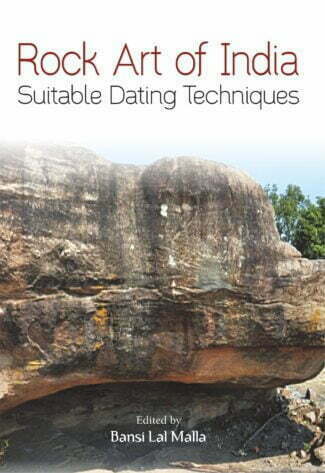
The present volume mainly emphasizes on a long due and much discussed and burning issues like that of what will be the Suitable Dating Techniques for Indian Rock Art. It includes not only new insights but also new dating results.
Rock art is a vital archaeological source to study and analyse the cognitive evolution of the human intellect across the world. The importance of rock art and its dating has long been a key issue of rock-art research and continues to be attended by difficulties about methodology, misinterpretation of findings and overconfidence in the reliability or precision of results. Most of the rock-art researchers primary focus in their investigations for rock-art dating at present has been to establish chronologies of different rock-art sites.
The present volume mainly emphasis on long due and much discussed issues like that of what will be the suitable dating techniques for Indian rock art. Some of the topics in the volume cover different dating methods such as the minimum dating by archaeological excavation, radiocarbon analyses of mineral accretions or their inclusions, radiocarbon analyses of paint residues or their inclusions, geomorphological methods, minimum or maximum ages derived from biological accretions, lichenometry, colorimetry of patinae, radiocarbon analyses of charcoal and beeswax figures, and any other methods of direct dating of rock art. This volume includes not only new insights but also new dating results. The data and interpretations put forward by various scholars are comprehensive and analytical. Most of their views are appropriate and hold promise in terms of recent trends in dating rock art.

The book studies the outstanding features of 31 famous palaces, pavilions and residences of the ruling class in different parts of Medieval India, from the thirteenth to the eighteenth century. It illustrates and discusses the layout plan of each building in detail.
The book brings out the outstanding features of the palaces, pavilions and residences of the ruling class in medieval India from the 13th to the 18th century. The focus is on structures that represent a group on religious and ethnic lines, i.e. Hindu/Islamic rulers, Indo-European Hindu or Dravidian Hindu or Afghani or Turk or Iranian rulers, and structures characteristic of particular periods and locales. Presenting some 31 famous buildings including the City Palace of Udaipur and Jaipur and the Lal Qila, Delhi and pleasure pavilions like the Hauz Khas, Delhi and Farah Bagh, Ahmadnagar, the work studies palaces and pavilions from the different regions of India. It illustrates the layout plan of each building in detail. Dr. Fredrick W. Bunce discusses the size, elaborateness or luxury of the royal structures which underlined the kings right to rule. With elaborate notes, he showcases their characteristics such as their tendency towards axiality and their symmetrical aspect, the Hindu rulers choice of the immutable square for the plan and their reliance on the shilpa-shastras, the east-west alignment of the structures, the labyrinthine character of residences/palaces, and their iconography that is unique to the Indian subcontinent. The volume has appendices that give the plans of other great structures of India and the world, list the major rulers of kingdoms in Indias different regions and provide a chronological list of major Indian monuments. The book will be extremely useful to students and scholars of Indian cultural history, particularly relating to architecture and iconography.
“Sacred Thread offers a visual and three-language presentation of Pataðjali’s YogasÂtra. These 196 short sentences form the foundation for the philosophy and practice of Yoga. One of six ways of viewing the world, this Darœana emphasizes human potential. Acknowledging the troubles caused by ignorance, egotism, addiction, and negativity, Yoga urges the cultivation of opposites: gentle behavior (ahiÚsÀ), truth-telling (satya), honesty (asteya), sexual restraint (brahmacarya) and avoidance of consumerism (aparigraha). Combined with practices of body, breath, and meditation, Yoga brings understanding and freedom. Working with the original Sanskrit text, the book renders photographic images to understand Yoga philosophy along with translation and explanation in English as well as Hindi. Without a syllable to spare, the Sanskrit text encapsulates the meaning of life and the possibility of freedom in four chapters: SamÀdhi, SÀdhana, Powers, and Freedom. The daily street life of India places the entire spectrum of Pataðjali’s wisdom on display. The authors have chosen from thousands of images to match Pataðjali’s glimpses of reality with what can readily be seen in Pune or Varanasi or Delhi. The English translation seeks to convey Pataðjali’s concision without adding too much explanation. The process of Yoga requires the quieting of thoughts. By letting the words stand on their own, a sense of connection emerges, conveying the thread of Yoga wisdom. Yoga is now studied and practiced in more than four dozen universities throughout India. The Hindi translation provides yet another bridge for comprehending the wisdom of Yoga. This book will be useful for the many people training to be experts in Yoga.”

This study, in an ethono-historical perspective, explores the multi linear evolution of Sakti worship in Orissa: from the pre-/protohistorical times to the late medieval epoch, and its continuity into the modern period with contextual focus on its probable genesis, historical development, festivals, ritualistic patterns, and cultural sources including myths, legends and folklore.
In the Hindu world-view, Shakti is the Mother of the Universe: the highest primal power. She is, accordingly, the all-pervading, intagible energy principle that propels the cosmos and its endless human dimensions with the life-throbs of activity and culture. Many are her songs, countless her stories, numerous her names. Worship of Shakti, as a pan-Indian phenomenon, predates Sanskritic influences of every kind. Combining his extensive fieldwork with diverse published and unpublished sources: archaeological, historical and religious, Francesco Brighentis study traces its presence in Orissa. Which, perhaps, provides the best paradigm of an age-old Goddess cult, deeply rooted in the autochthonous religious traditions of Eastern India. It is the first, all-encompassing study, in an ethono-historical perspective, exploring the multilinear evolution of Shakti worship in Orissa: from the pre-/proto- historical times to the late medieval epoch, and even its continuity into the modern period with contextual focus on its probable genesis, historical development, festivals, ritualistic patterns, and cultural sources including myths, legends and folklore. The book also incorporates, besides a description of important Shakta centres in Orissa, a study of the Divine Mothers iconographic features in Her multifarious manifestations. Together with around hundred illustrations highlighting the varied representations of Shakti in sculpture, this study will interest not only the scholars of archaeology, history and religion, but historians of art as well.
| There are no products |